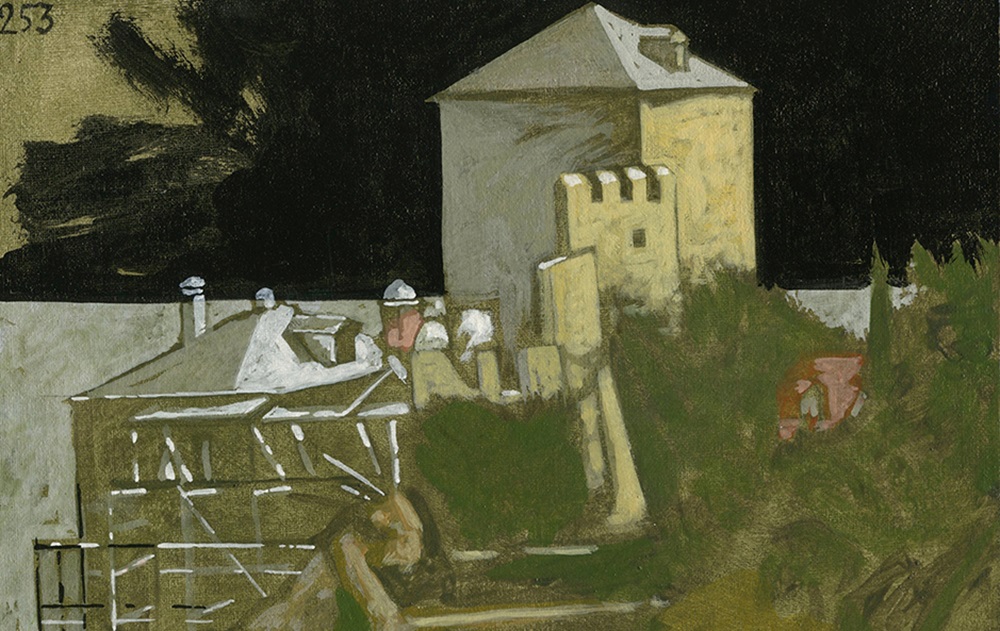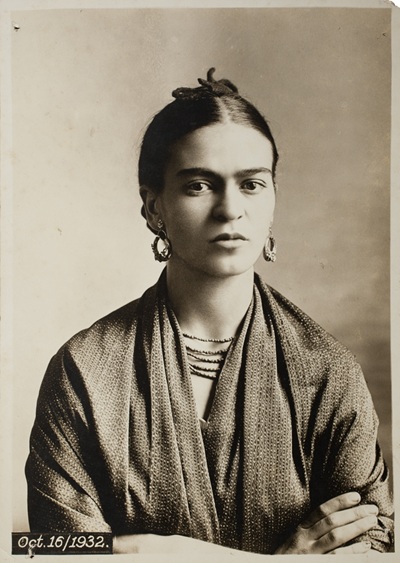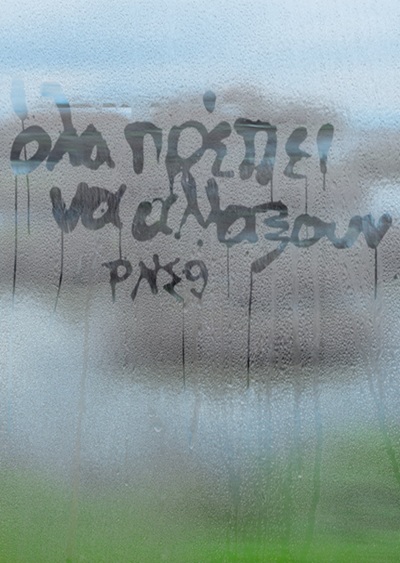
On Friday 15 December the exhibition of works by Markos Kampanis, curated by art historian George Mylonas, was inaugurated at the National Library of Greece, at the Stavros Niarchos Cultural Centre.
The exhibition was inaugurated by the Minister of Education Mr. Kyriakos Pierrakakis and the President of the Electoral Council of the NLG Mr. Stavros Zoumboulakis, who also edits the printed catalogue that accompanies the exhibition.
The presence of the Minister marks a new perspective on the promotion of literature in the country, since although he is the main person responsible for the organization of the so-called welfare state and a supporter of the transformation to a digital society, he strongly supports the printed book, giving the library the opportunity for the first time after 30 years to buy international printed publications.
The printed publication accompanying the exhibition is also signed by George Mylonas, Maria Vasilaki, Irini Orati, George Triantafyllou, George Hadjimichalis, Zoltan Somhegyi, Dionysis Kapsalis.

As the artist pointed out, the chronological period covered by the exhibition concerns the period from the year he visited Mount Athos to the year he exhibited his last work.
The structure of the exhibition, with 700 works, is tight and content-rich. In its reception a diary of digits ,with works of 20*20 cm or 20*25 cm with themes that cover the chronological period from May 2012 to May 2013 on a daily basis. Personalities such as Cavafy, Vamvakaris, Verdi, Papaloukas, Bacon declare their presence in the work of Campanis.
The curator, Mr. Mylonas, describes the section as the “fantastic museum of Kampanis”. The works consist of drawings, acrylics, murals, monotypes, digital prints.
A special place in the exhibition, however, is occupied by the works -references to Mount Athos- for which Mr. Zoumboulakis points out in his introductory note that they are not sheer reproductions. Mr. Mylonas notes “His need for nature combined with the study of the history of art finds in Mount Athos the ideal way of expression. Large and small surfaces from murals to book illustrations have led the former director of the Byzantine Museum, Dimitrios Konstantos, to describe him as “a renewer of our ecclesiastical painting“.
The curator refers to Kampanis’ overall work and his influences in the exhibition catalogue, referring to his studies in Greece and abroad as well as to his mentors (Kyriakos Katzourakis, and others). Figures like those of Karagiozis are found in his early works alongside works by great classics. As G. Mylonas οbserves, “Kampanis is even more influenced by this peculiar confrontation always in terms of the coexistence or conversation of apparently opposite worlds.”
Particular reference is also made to the large composition “Notes of a Taurus” where, according to the curator, he visually preserves the sanctity of the landscape by working even with images from Google maps in order to achieve a complete composition of the landscape. “He focused his gaze -different from that of the antiquarian or even the photographer- on the creation of a new image characterized by monumental solidity.”
In the distinct sections of the exhibition are also developed the sections dedicated to trees. In the exhibition “The Museum of Trees” displayed at the Athens Art Gallery, influences from the Assyrians to today’s masters can be seen. It is essentially “a history of art within art based on trees, a study of the way the tree is represented from Greek antiquity and the Etruscans to Andre Dersin, Spyros Papaloukas and Pete Mondrian.”

A special section is also the one on the Archives. The works that refer to Penelope Delta, the colour variations of the fabrics in Greco’s works and 72 small works with maps based on material from the General State Archives stand out,
Last Heritage, exhibited at Gallery K in London in 2008, is based on a photographic archive of destroyed monuments and churches in Cyprus after the Invasion.
M. Kampanis has worked as a curator and art critic, but he is also a researcher and a keen naturalist.
In any case, his work exudes a deep nobility and a sense of approaching the universal and the essential. Although his message is clear and distinct ,whether it is about painting ,monotypes or illustrations, the feeling is that of a deep spirituality and an approach to the essence of this world. Hinting at the human need to purge itself of passions and decay, he sees the restored landscapes as ruins but also the secret underground communication of the form of the tree dedicated ,to ever-renewing life ,as a common reference point for all of humanity.
As Mr. Zoumboulakis states in his preface to the catalogue, “The Western world to which we belong is certainly post-Christian, but this does not mean that art has ceased to engage with the sacred and the transcendental“.







Leave A Comment